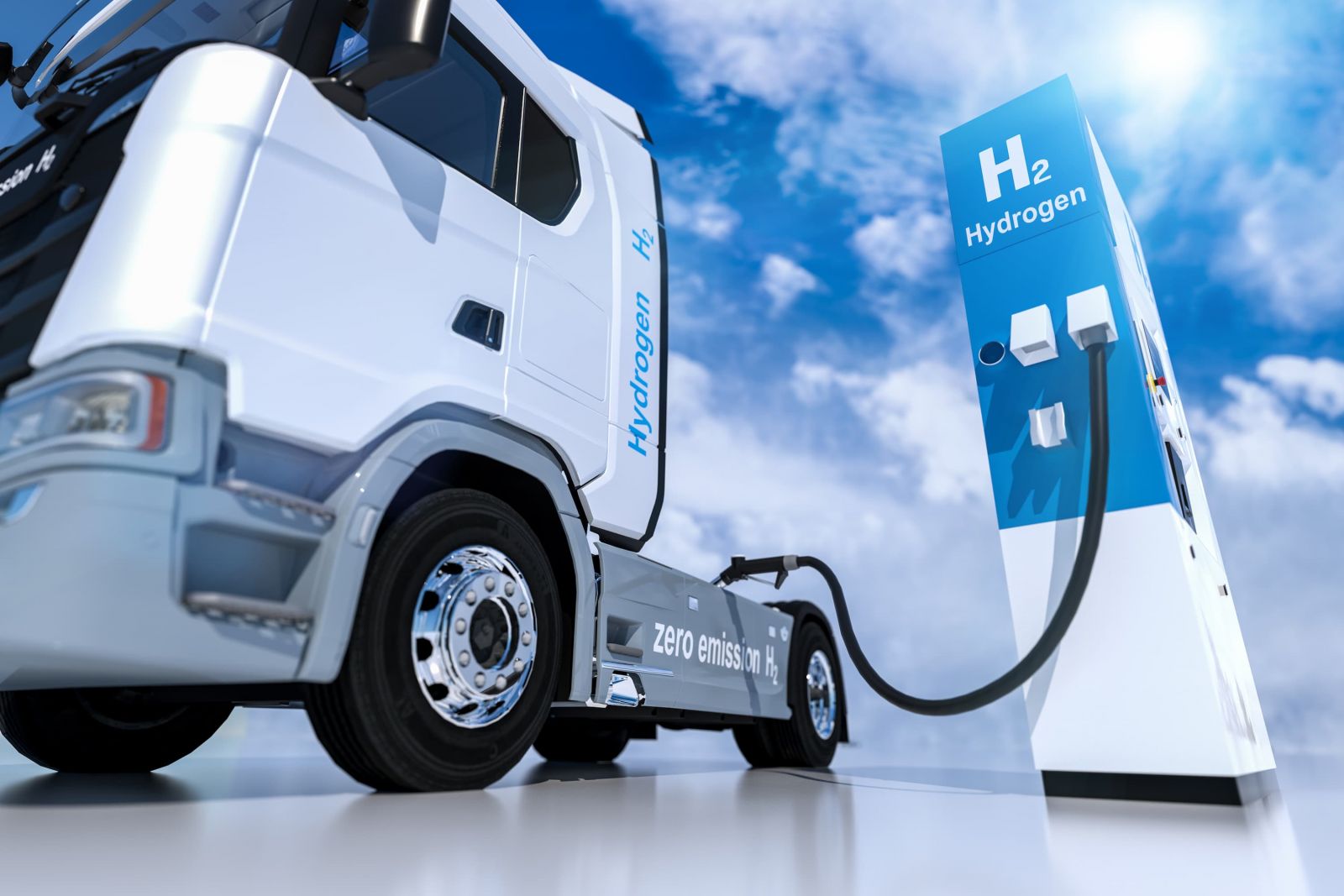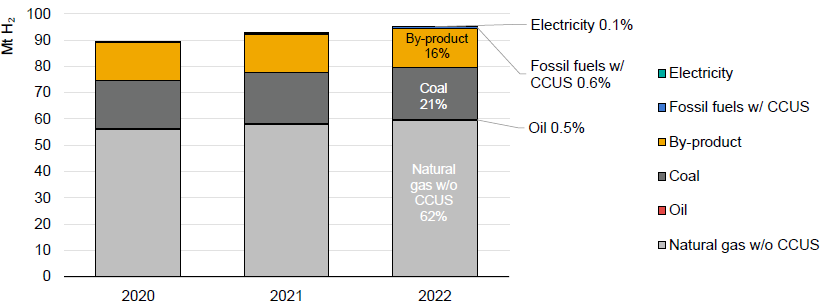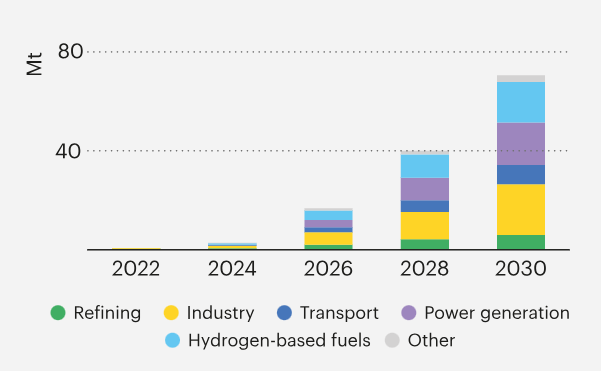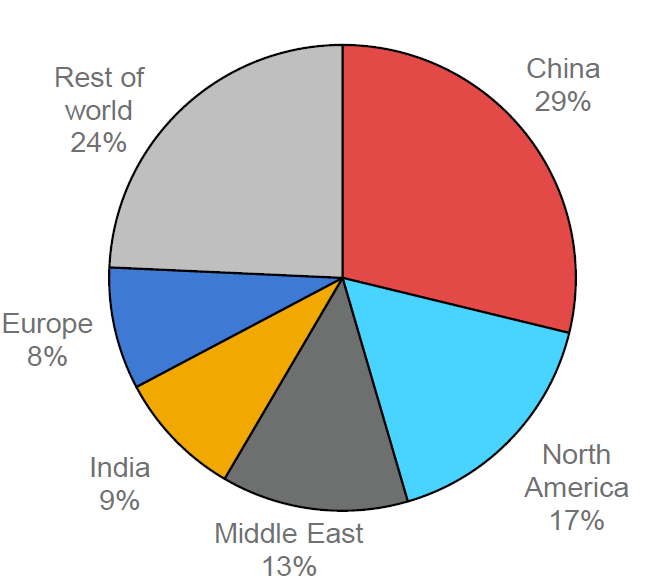Sustainability & CSR
The future of hydrogen
Hydrogen energy is a key element on the path to a sustainable and greener future but successful development will first require overcoming several challenges.
By Meg Lin, Jason Wang and James McCatherin

The transition towards achieving net-zero emissions has taken centre stage, demanding swift action at the international level. Alongside the need to construct more renewable energy infrastructure and adopting energy conservation measures, the substitution of fossil fuels with alternative fuels has become paramount. Hydrogen has emerged as a pivotal element in this global switch to clean energy, with nations worldwide, including Taiwan, actively embracing hydrogen energy solutions. Taiwan's overwhelming reliance on imported fossil fuels and high demand for electricity make hydrogen energy all the more essential to Taiwan’s net-zero transition. But to be successful in the rollout of clean domestic hydrogen energy, Taiwan must innovate and overcome a series of clear challenges.
Despite hydrogen’s promising role in helping Taiwan to meet its energy goals, hydrogen energy in Taiwan still faces some obstacles, such as:
- Insufficient hydrogen infrastructure
- Lack of practical supportive policies
- Lack of public awareness
- Lack of practical incentives to stimulate hydrogen development.
Hydrogen energy has a number of distinct characteristics which determine its important role in decreasing Taiwan’s unsustainable reliance on imported fossil fuels. This article will provide a basic introduction to hydrogen and its implementations in clean energy generation within a global context, demonstrate the likely key role hydrogen will play in Taiwan’s future energy mix, and highlight specific challenges the hydrogen energy rollout currently faces in the Taiwan market.
Introduction to hydrogen
Hydrogen (H2) serves as a clean fuel source, generating only water and heat when consumed in a fuel cell. Its versatility extends to various production methods, including those utilising existing energy resources like natural gas, nuclear power, biomass, and renewable sources, such as solar and wind. These attributes make hydrogen an appealing option for both transportation and electricity generation, with applications ranging from automotive use, residential heating and industrial gasses, to portable power solutions and energy storage. Furthermore, hydrogen plays a pivotal role as an energy carrier, with the potential of further facilitating the storage, transportation, and delivery of energy generated from diverse sources.
Hydrogen in power generation
Currently, several methods exist for producing hydrogen fuel. The most prevalent approaches involve thermal processes, with steam reforming being a prime example; this type of hydrogen production is known as grey hydrogen. A wide range of hydrocarbon fuels, including natural gas, diesel, methanol, gasified coal, and gasified biomass, can undergo conversion to produce hydrogen. Notably, according to the International Energy Agency’s (IEA) Global Hydrogen Review 2023 report, approximately 83% of all hydrogen production today relies on steam reforming of fossil fuels as the primary method and is thus considered grey hydrogen.

Figure 1: Hydrogen production by technology, 2020-2022
Source: IEA “Global Hydrogen Review 2023.”
Green hydrogen
Hydrogen generated through electrolysis earns the label "green" when it is powered by renewable sources like wind or solar energy. For this reason, green hydrogen stands out as the most environmentally responsible variant of hydrogen energy production. There are three primary methods for producing hydrogen via electrolysis: alkaline (AEC), polymer electrolyte membrane (PEMEC) and solid oxide electrolyser cell (SOEC). Excess renewable electricity generated during periods of low demand can be used to operate electrolyser plants, producing hydrogen. Hydrogen created through this process is capable of being stored and subsequently converted back into electricity when needed. This hydrogen can then serve as a carbon-free energy reservoir that can be converted back into electricity when demand peaks, providing grid stabilisation and balancing power. This method is sometimes referred to as "power-to-gas-to-power" and is highlighted in the diagram below:

Figure 2: Power-to-gas-to-power
Source: Drawn by Taiwan Institute of Economic Research (TIER)
The "power-to-gas-to-power" method attracts considerable attention because of its exceptional energy storage capacity. Hydrogen, in this context, can be stored for extended periods, measured in months or seasons, without experiencing significant power loss during discharge. This stands in stark contrast to other technologies such as lithium-ion batteries, which can deplete their charge within hours. Hydrogen storage demonstrates far greater longevity. For this reason, unlike existing energy storage systems primarily used for short-term grid frequency adjustments or power scheduling, hydrogen can be converted from electricity to gas, enabling seasonal and long-term energy storage. Similarly, in the realm of green transportation, hydrogen-powered vehicles also boast extended ranges and greater carrying capacities compared to current electric vehicles.
Global progress in hydrogen energy
As a large part of the global community strives to attain net-zero emissions by 2050, the world is significantly increasing its capacity for renewable energy sources. However, the intermittent nature of renewables necessitates the use of energy storage and complementary measures to manage energy fluctuations. This situation has spurred the growth of energy storage and smart grid industries. Realising the crucial role that hydrogen could play in this process, governments internationally have formulated national hydrogen energy strategies and promotion policies and started to invest hundreds of millions of euros in research and development, demonstration, and commercialisation of hydrogen energy. As a result, demand for clean hydrogen is expected to rise rapidly over the next few years, as indicated in the chart below.

Figure 3: Expected demand for low-emission hydrogen between 2022 and 2030
Source: IEA (2023), “Net Zero Roadmap: A Global Pathway to Keep the 1.5 °C Goal in Reach”
According to the IEA's Global Hydrogen Review 2023 report, China is currently the most important market for hydrogen energy, followed by the US, the Middle East, India and Europe. Hydrogen is mainly used by steel, chemical, oil refining and semiconductor industries, with the chemical and steel industries being the most important markets.

Figure 4: Hydrogen use by region (2022)
Source: IEA (2023), “Global Hydrogen Review 2023.”
Globally there is significant momentum in the hydrogen sector, with nine countries unveiling their national strategies for hydrogen energy production in 2021-2022. Nevertheless, there's a pressing need for swifter action to stimulate demand for low-emission hydrogen and facilitate investment that can expedite the scaling up of production. This, in turn, will drive down the costs associated with technologies deployed in the generation and utilisation of clean hydrogen, including electrolysers, fuel cells, and hydrogen production incorporating carbon capture methods.
Policy actions and deployment efforts in the hydrogen sector are being led by different countries and regions around the world. In General, Europe and the US have been leading in policy, with China leading in deployment. Here’s a look at the status of hydrogen in different markets globally:
China
China is taking the lead in deployment, particularly in electrolyser capacity additions. In 2022, they accumulated nearly 220MW of capacity, with an additional 750MW under construction, expected to be operational in this year.
European Union
The European Union is actively engaged in policy development. The block adopted two delegated acts in February 2023 to define renewable hydrogen and approved funding for the first two waves of hydrogen-related Important Projects of Common European Interest in 2022. In addition, they announced the first auctions of the European Hydrogen Bank, scheduled for the end of 2023.
United States
In August 2022, the United States announced significant incentives for clean hydrogen production under the Inflation Reduction Act (IRA), showing commitment to advancing hydrogen as a clean energy source.
Why does hydrogen energy play an important role in Taiwan's path to net zero by 2050?
Taiwan faces a unique series of challenges in its net zero transition, including high dependency on fossil fuel imports, and high industrial power and industrial gas demand.
External constraints for green energy
As an island, Taiwan lacks physical power interconnections with neighbouring countries while Taiwan’s geography, lack of natural resources, and land constraints pose significant challenges to Taiwan’s net-zero transition and energy security. Although significant progress in green energy is being made, in 2022, a staggering 97.27% of Taiwan's total energy supply relied on imports of fossil fuels. The majority of electricity generation stemmed from imported coal and natural gas, constituting 80.9% of the total generation, while nuclear power accounted for only 8.2%, and renewables, predominantly hydropower, solar and wind, made up 8.3%. In fact, gas consumption is not only increasing in the energy sector, but also in the industrial sector, which consumed 4.067 billion cubic metres of gas in 2022, more than doubling from the 1.84 billion cubic metres consumed in 2012.
Although ‘traditional’ green energy solutions such as solar and wind energy will play an increasingly important role in Taiwan’s net-zero transition, Taiwan’s road to net zero is significantly more challenging due to the following externalities: In Taiwan, available land constraints limit the expansion of utility-scale solar and onshore wind power. Restricted river systems hamper the potential of hydro and pumped storage energy solutions, and geothermal energy faces limitations due to a lack of government support. In addition, there's public resistance to nuclear power, dam construction, and even onshore wind installations. To partially offset these challenges, Taiwan possesses excellent offshore wind resources in the Taiwan Strait and is making significant headway in its production of offshore wind power. Regardless, Taiwan’s constraints in green energy production make hydrogen crucial if it is to be successful in it’s net-zero aspirations.
The semiconductor Industry
Taiwan holds the distinction of manufacturing approximately 65% of the world's semiconductor chips, with nearly 90% of the most advanced ones originating from its production lines. This semiconductor manufacturing process, however, demands an enormous amount of electricity. In the year 2022, TSMC, a major player in the industry, alone accounted for 7.5% of Taiwan's total energy consumption. Projections suggest that this figure will surge to 12.5% by 2025 as TSMC continues its expansion by constructing new chip fabrication facilities.
Fortunately, hydrogen already plays a vital role in Taiwan's semiconductor industry, primarily in the production of integrated circuits and semiconductor devices. Some of the key applications of hydrogen in Taiwan's semiconductor industry include Chemical Vapor Deposition (CVD), annealing and heat treatment, ion implantation, etching and cleaning and reduction processes. Because the semiconductor industry is highly sensitive to the purity and quality of gases used in various processes, hydrogen used in these applications must meet stringent purity standards to avoid contamination of semiconductor materials and ensure the reliability and performance of semiconductor devices. While Taiwan's semiconductor industry is a significant consumer of hydrogen, especially in its advanced manufacturing processes, the hydrogen used in this context is not typically sourced from renewable energy. However, Taiwan’s semiconductor industry, with its existing innovation in the hydrogen sector, high demand for electricity, and growing pressure to find sustainable solutions for its energy consumption, could prove to be a major innovative strength in Taiwan’s development of green hydrogen energy.
What are the most significant obstacles for developing hydrogen in Taiwan?
Taiwan's National Development Council (NDC) released a net-zero emissions roadmap in 2021, highlighting hydrogen as a pivotal element in the strategy. Nonetheless, the following pressing issues must be addressed, to invigorate hydrogen development:
- Insufficient hydrogen infrastructure: Taiwan's immediate future might not yield sufficient green power for hydrogen production. As a result, the development of hydrogen energy will heavily rely on imports from resource-rich nations (such as Australia). Planning for hydrogen receiving stations and storage tanks for hydrogen imports is imperative. Moreover, the current absence of pipelines and hydrogen refuelling stations in Taiwan necessitates early planning and construction to align with international standards and practices.
- Lack of practical supportive policies: While Taiwan's research institutes, industries, and academia have dedicated over two decades to developing hydrogen and fuel cell technology, it wasn't until 2022 that the NDC unveiled a key hydrogen energy strategy. In comparison to hydrogen subsidy schemes in other nations, Taiwan's policy falls short in establishing concrete timelines and specific targets. This includes crucial aspects like the number of hydrogen refuelling stations, hydrogen carriers, and the deployment goals for fuel cell distributed generation equipment in both private and industrial sectors over the medium to long term. While Taiwan's policy ambitiously aims for hydrogen to constitute 9-12% of its electricity mix by 2050, it lacks the clear, detailed targets and timelines seen in the policies of many other countries.
- Public awareness of hydrogen energy is still low: In comparison to wind and solar power, general public awareness of hydrogen is lacking. In the future, if Taiwan is to vigorously promote hydrogen energy, it can take reference from the practice of hydrogen energy promotion in the United Kingdom, Japan, and Korea, such as actual subsidies for enterprises and the public to buy relevant home-use fuel cells or heating equipment, so that the public can have the opportunity to experience and exchange opinions, and also to educate and communicate about the safety and operation of hydrogen energy.
- Lack of practical incentives to stimulate the development of hydrogen energy: Currently, hydrogen energy applications worldwide predominantly rely on grey hydrogen, and governments are offering incentives to boost its utilisation. In Taiwan, subsidies are provided for fuel cells that use only green hydrogen. However, to foster widespread adoption of hydrogen energy in the future, incentives should extend to grey hydrogen applications. This approach would establish a solid foundation for transitioning to green hydrogen down the line. Waiting until green energy attains a certain scale before promoting hydrogen development risks lagging behind global advancements, which could diminish Taiwan's competitiveness in related industries.
Taiwan's semiconductor and manufacturing industries have earned global recognition. However, these industries, which rely on a substantial and stable supply of energy, present a significant challenge to Taiwan's path towards achieving net-zero emissions if the energy provided is not green. Fortunately, Taiwan has been developing its hydrogen fuel cell industry for over two decades, boasting a mature supply chain and extensive experience in utilising hydrogen fuel cells. Some Taiwanese companies have even integrated into the international supply chain. The time is ripe for Taiwan to accelerate its hydrogen energy development. The government should seize this opportunity to initiate strategic planning, potentially collaborating with advanced markets such as the European Union. Such collaboration could help establish a thriving global net-zero market.
Dr Meg Lin (Jo-Chen) is the Deputy Director of the Taiwan Institute of Economic Research, CEO of the Taiwan Hydrogen and Fuel Cell Partnership, and Policy Research Group Convener of the Taiwan Energy Storage System Industry Promotion Alliance. For more than 10 years she has specialised in net-zero trends, policy formulation and international collaboration, particularly in hydrogen, energy storage, smart cities, and electric vehicles. She has been a visiting scholar and researcher at St. Andrews University (UK) since 2022.
Jason Wang is a Senior Economist for NIRAS, a Danish multi-disciplinary engineering company, focused on energy policy and market forecast consultancy for clients and supporting NIRAS’ efforts in Environmental Social and Governance (ESG) offerings in the APAC region.
James McCatherin is a Consultant for NIRAS. He supports social & political considerations for offshore wind as well as Environmental Social and Governance (ESG) in Taiwan and the APAC region. His background is in international development and political science.